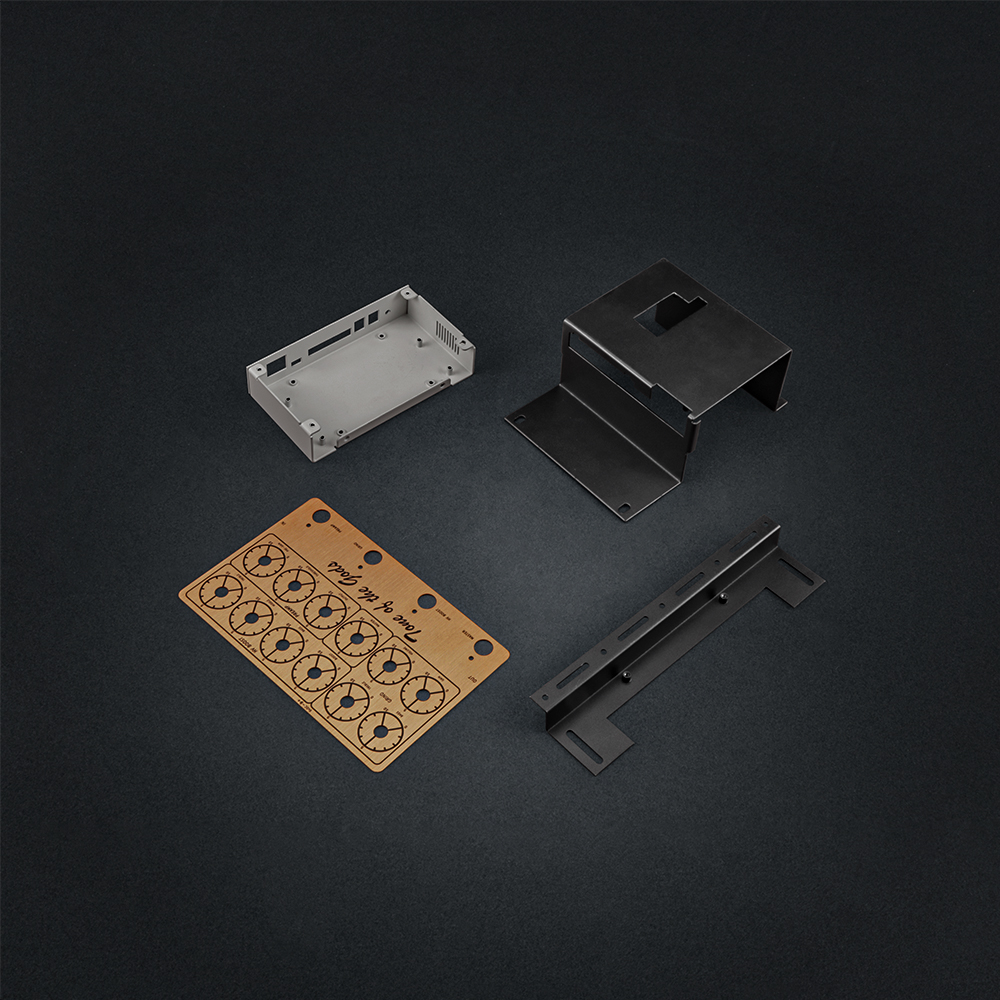Sheet Metal Processing: Common Challenges and Solutions+ View more
Sheet Metal Processing: Common Challenges and Solutions
+ View more
Date:2023-10-19 11:07
Sheet metal processing is an integral part of various industries, including automotive, aerospace, construction, and electronics. It involves shaping and manipulating metal sheets to create components or products with specific dimensions and designs. However, like any manufacturing process, sheet metal processing comes with its own set of challenges. In this article, we will explore the common challenges faced in sheet metal processing and discuss the possible solutions for each.

Material selection and specifications:
One of the initial challenges in sheet metal processing is selecting the right material for the specific application. The material choice depends on factors such as strength, flexibility, corrosion resistance, and cost. Additionally, meeting the required material specifications can be a challenge, especially when dealing with complex geometries or thin walls.
Solution: A thorough analysis of the desired properties and requirements of the final product is crucial for selecting the appropriate material. Collaboration between engineers and material suppliers can help in identifying the best materials for the specific application. Conducting material tests and simulations can also ensure that the chosen material meets the required specifications.Precision in dimension and tolerance control:
Sheet metal processing often demands high precision in terms of dimensions and tolerances. Achieving these tight tolerances consistently can be a significant challenge. Variations in the material properties, handling, and manufacturing processes can affect the final product's dimensional accuracy.
Solution: Utilizing advanced technologies such as computer-aided design (CAD) and computer-aided manufacturing (CAM) can improve precision and tolerance control. CNC (Computer Numerical Control) machines are commonly used for sheet metal processing due to their high accuracy and repeatability. In-process inspections, such as using coordinate measuring machines (CMM), can also help ensure that the final product meets the desired dimensions and tolerances.
Solution: Utilizing advanced technologies such as computer-aided design (CAD) and computer-aided manufacturing (CAM) can improve precision and tolerance control. CNC (Computer Numerical Control) machines are commonly used for sheet metal processing due to their high accuracy and repeatability. In-process inspections, such as using coordinate measuring machines (CMM), can also help ensure that the final product meets the desired dimensions and tolerances.

Forming complex shapes:
Forming sheet metal into complex shapes can be a daunting task. The material tends to undergo spring back, which refers to the elastic recovery of the material after being subjected to bending or forming operations. Properly predicting and controlling spring back can be a challenge, especially when dealing with intricate designs or high-strength materials.
Solution: Utilizing simulation software can help in predicting and minimizing springback. Finite element analysis (FEA) software can simulate the forming process and provide insights into how different parameters, such as tooling design, material properties, and forming sequence, impact springback. Additionally, adopting specialized forming techniques, such as incremental forming or stretch forming, can aid in achieving complex shapes while minimizing spring back.
Solution: Utilizing simulation software can help in predicting and minimizing springback. Finite element analysis (FEA) software can simulate the forming process and provide insights into how different parameters, such as tooling design, material properties, and forming sequence, impact springback. Additionally, adopting specialized forming techniques, such as incremental forming or stretch forming, can aid in achieving complex shapes while minimizing spring back.
Welding and joining:
Sheet metal processing often involves welding or joining multiple components together. Achieving strong and reliable welds or joints can be challenging due to factors like material compatibility, joint design, distortion, and heat-affected zone (HAZ).
Solution: Proper selection of welding techniques, such as MIG (Metal Inert Gas) or TIG (Tungsten Inert Gas) welding, based on the material and joint requirements is essential. Attention should be paid to joint design, ensuring sufficient contact area and alignment. Controlling and minimizing heat input during welding can reduce distortion and minimize the extent of the HAZ. Conducting proper weld inspections and tests can help identify any issues or defects in the welded joints.
Solution: Proper selection of welding techniques, such as MIG (Metal Inert Gas) or TIG (Tungsten Inert Gas) welding, based on the material and joint requirements is essential. Attention should be paid to joint design, ensuring sufficient contact area and alignment. Controlling and minimizing heat input during welding can reduce distortion and minimize the extent of the HAZ. Conducting proper weld inspections and tests can help identify any issues or defects in the welded joints.
Surface finish and cosmetic appearance:
Sheet metal components often require a specific surface finish or cosmetic appearance, especially in industries like automotive or electronics. Achieving consistent and high-quality surface finish can be challenging due to variations in the material, forming processes, and finishing techniques.
Solution: Proper surface preparation techniques, such as cleaning, deburring, and surface treatment, should be employed before applying any desired coatings or finishing processes. Utilizing advanced surface finishing technologies like powder coating, electroplating, or anodizing can ensure consistent and durable surface finishes. Regular quality checks and inspections can help maintain the desired cosmetic appearance of the finished components.
Solution: Proper surface preparation techniques, such as cleaning, deburring, and surface treatment, should be employed before applying any desired coatings or finishing processes. Utilizing advanced surface finishing technologies like powder coating, electroplating, or anodizing can ensure consistent and durable surface finishes. Regular quality checks and inspections can help maintain the desired cosmetic appearance of the finished components.

In conclusion, sheet metal processing comes with its share of challenges, ranging from material selection to achieving precise dimensions and complex shapes. However, with the right combination of expertise, advanced technologies, and effective problem-solving strategies, these challenges can be overcome. By staying updated with the latest advancements in sheet metal processing and involving collaborative efforts among manufacturers, engineers, and material suppliers, the industry can continue to streamline processes and deliver high-quality sheet metal components and products.
Share to:
Recommend wonderful blog posts

